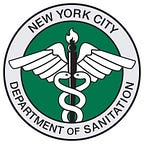Why Do My Cardboard Cartons Go in the Blue Bin?
By NYC Department of Sanitation
If you have been putting your milk cartons and juice boxes out with your paper and cardboard recycling, it might seem like a logical placement. After all, they are cardboard, right? But there is more to these containers than just cardboard, and in order for them to have a second life, they should be put out with your glass, plastic, and metal recycling.
Use of these cartons — known as aseptic containers — has grown in recent decades, used not just for milk and children’s juice, but also cooking stock, coconut water, even wine. The makers of these containers tout that they are lighter weight (and therefore easier to transport), allow for easier sterilization (and therefore fewer preservatives in the product) and are mostly made of a renewable resource. Aseptic containers also extend the shelf life of most food products, resulting in less food waste.
So why does a cardboard container not go with cardboard? These cartons may seem like cardboard, but they’re made of multiple layers, including thin layers of plastic coating — and in some cases aluminum, too — that must be removed before the paper portion can be recycled. And unlike paper and flattened cardboard, these boxes are three dimensional, and the equipment at Sims Municipal Recycling in Sunset Park is best equipped to separate these.
So, when you put your cartons into your blue bin with aluminum cans, plastic jugs, and glass bottles, they all go onto a series of conveyor belts at Sims, where they pass through optical infrared scanners. When the appropriate scanner spots one of these cartons, a jet of air pushes it onto another conveyor belt, grouping like containers together. The milk cartons, juice boxes, coconut water containers and more are then collected together and sold to a facility that can remove the thin layers of plastic and aluminum, and then turn the paper portion into a new product, usually facial tissue or toilet tissue.
These cartons are a small share of our overall waste, according to our last three Waste Characterization Studies, a process where we sort more than 800 samples of New York City residential waste into 242 categories to better inform our solid waste management programs. Our 2017 study found that the average New York City household properly recycled 2.5 pounds of aseptic cartons each year (down from 3.2 in 2005), while improperly tossing 4.2 pounds per year (down from 7.5 in 2005). The study also found that these aseptic cartons are the most misplaced recycling items, with 10 percent ending up with paper recycling.
So remember, next time you finish one of these cartons, put it in the blue bin so that it can be saved from the landfill and instead have a new life on our supermarket shelves — and when you’re at the supermarket, support the circular economy and buy recycled products.
